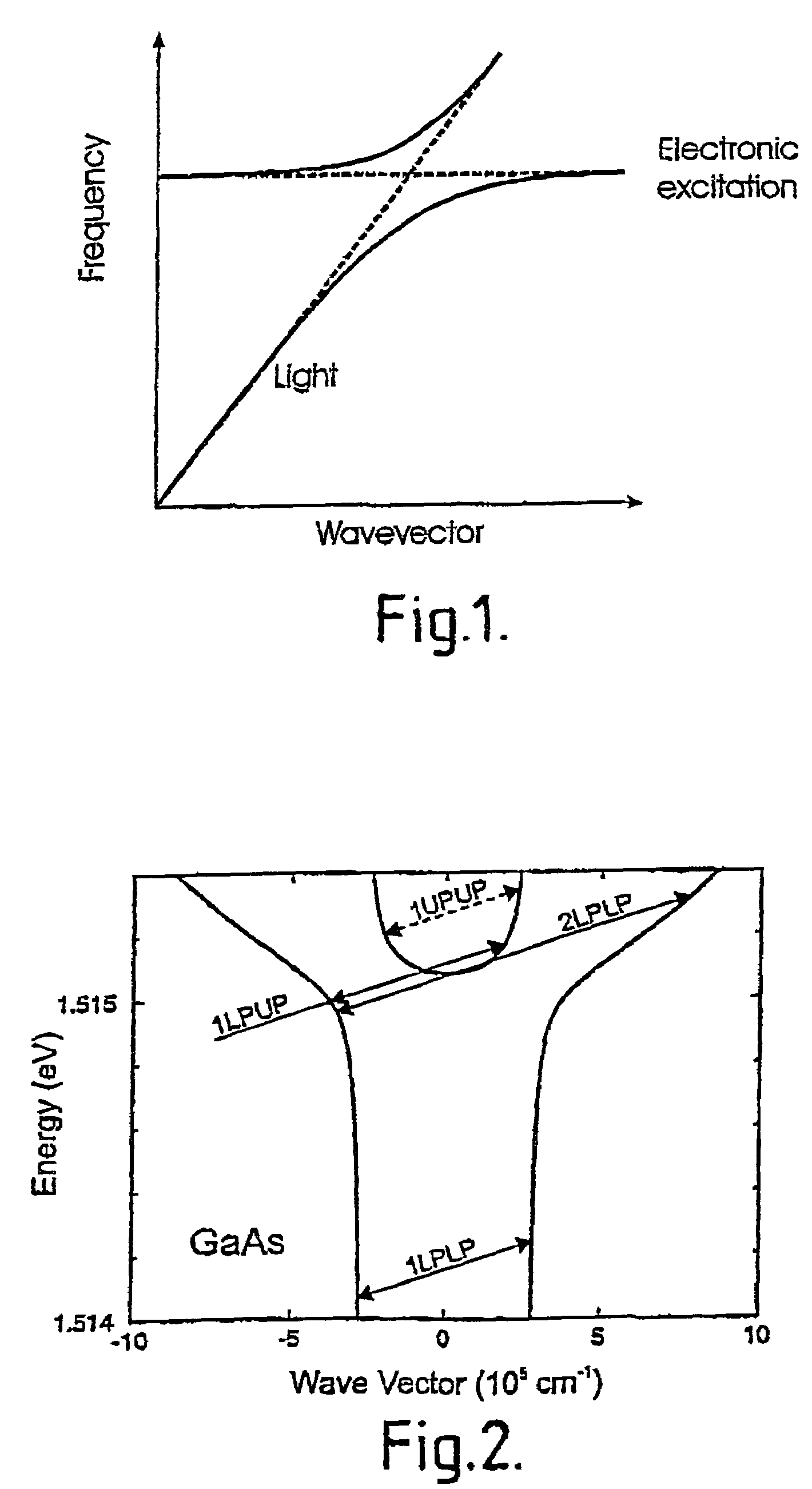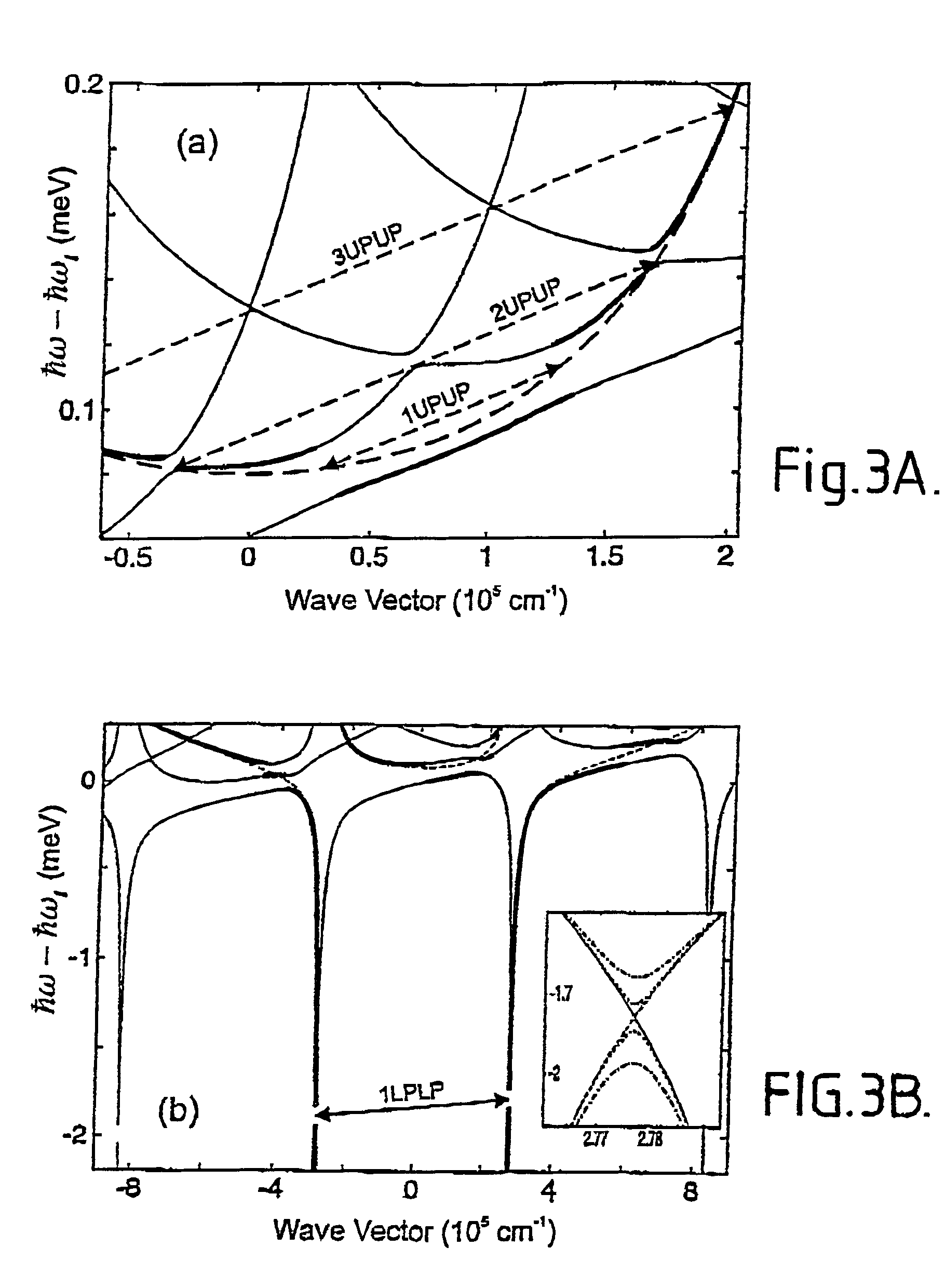Acousto-optical device based on phonon-induced polaritonic band gaps
a technology of phonons and optical devices, applied in the field of acoustooptical devices based on phonon-induced polaritonic band gaps, can solve the problems of enormous acoustic power which needs to be applied to achieve significant interaction, and achieve the effects of low interaction, fast switching time, and significant performance advantages
- Summary
- Abstract
- Description
- Claims
- Application Information
AI Technical Summary
Benefits of technology
Problems solved by technology
Method used
Image
Examples
Embodiment Construction
[0027]In the present invention, an alternative to the Stark effect is used in which acoustically driven excitation-polaritons are probed by weak light. Since an acoustically pumped intrinsic Semiconductor remains in its ground electronic state, no many-body effects influence the acoustic Stark effect and weaken the exciton-phonon interaction. A schematic graph of the polariton energy states in bulk updoped Gallium Arsenide (GaAs), driven by Ghz acoustic wave is shown in FIG. 2.
[0028]In the presence of an acoustic wave of wavevector q frequency ω the branches of the polariton dispersion that can undergo degenerate mixing (i.e. the difference frequency and wavevector between the two polaritons is a multiple of the acoustic wave) with the sound wave are strongly changed, while those parts of the dispersion for which the degeneracy condition is not met are hardly changed. Consequently the propagation of light through the sample is modified for specific and tunable frequencies and direct...
PUM
 Login to View More
Login to View More Abstract
Description
Claims
Application Information
 Login to View More
Login to View More - R&D
- Intellectual Property
- Life Sciences
- Materials
- Tech Scout
- Unparalleled Data Quality
- Higher Quality Content
- 60% Fewer Hallucinations
Browse by: Latest US Patents, China's latest patents, Technical Efficacy Thesaurus, Application Domain, Technology Topic, Popular Technical Reports.
© 2025 PatSnap. All rights reserved.Legal|Privacy policy|Modern Slavery Act Transparency Statement|Sitemap|About US| Contact US: help@patsnap.com



